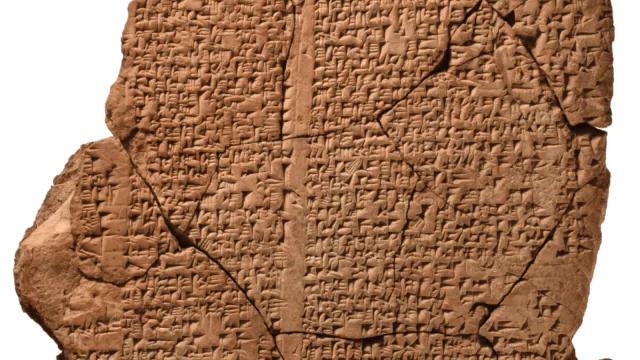
1,000-yr-old Hymn to Babylon Praising Ancient City Revived with AI
For centuries, the ancient city of Babylon has been shrouded in mystery and intrigue. Founded by King Hammurabi in the 18th century BC, Babylon was once the capital of the Neo-Babylonian Empire, known for its stunning architecture, vibrant culture, and rich history. Now, researchers have made a groundbreaking discovery that has brought new life to this ancient city. A 1,000-year-old hymn dedicated to Babylon has been rediscovered using AI, offering a unique glimpse into the daily life, culture, and spirituality of the ancient city.
The hymn, which dates back to the 7th century BC, is a poem dedicated to the god Marduk, the patron deity of Babylon. The poem is a masterpiece of Babylonian literature, describing the city’s flowing rivers, jewelled gates, and “bathed priests” in stunning detail. The hymn is a testament to the city’s grandeur and sophistication, and its rediscovery is a major breakthrough in the field of ancient Near Eastern studies.
According to researchers, the hymn was discovered using an AI-supported platform that analyzed a large corpus of ancient texts. “Using AI-supported platform, we managed to identify 30 other manuscripts that belong to rediscovered hymn,” said lead researcher Enrique Jiménez. The researchers used a combination of machine learning algorithms and human expertise to identify the hymn, which had been lost for over 1,000 years.
The hymn is a significant discovery because it offers a unique perspective on ancient Babylonian culture and society. The poem describes the city’s architecture, its people, and its spiritual practices in vivid detail. The hymn also provides insight into the daily life of Babylon’s inhabitants, including their social structures, economic systems, and religious practices.
One of the most striking aspects of the hymn is its description of Babylon’s architecture. The poem describes the city’s famous Ishtar Gate, which was adorned with images of dragons and bulls, as well as its majestic temples and palaces. The hymn also describes the city’s famous Hanging Gardens, which were considered one of the Seven Wonders of the Ancient World.
The hymn also provides insight into the daily life of Babylon’s inhabitants. The poem describes the city’s bustling marketplaces, where merchants sold everything from fine textiles to precious jewels. The hymn also describes the city’s vibrant cultural scene, which included music, dance, and theater.
The rediscovery of the hymn is a major breakthrough in the field of ancient Near Eastern studies. The poem offers a unique perspective on ancient Babylonian culture and society, and its rediscovery is a testament to the power of AI in uncovering lost knowledge.
The discovery of the hymn is also significant because it sheds new light on the history of the ancient city of Babylon. For centuries, Babylon has been shrouded in mystery, and its history has been largely pieced together from fragmentary evidence. The rediscovery of the hymn provides a new window into the city’s past, offering a glimpse into the daily life, culture, and spirituality of its inhabitants.
The rediscovery of the hymn is also significant because it highlights the importance of preserving and conserving ancient texts. The hymn is a rare and valuable artifact, and its rediscovery is a testament to the importance of preserving our cultural heritage.
In conclusion, the rediscovery of a 1,000-year-old hymn dedicated to the ancient city of Babylon is a major breakthrough in the field of ancient Near Eastern studies. The poem offers a unique perspective on ancient Babylonian culture and society, and its rediscovery is a testament to the power of AI in uncovering lost knowledge. The discovery of the hymn is also significant because it sheds new light on the history of the ancient city of Babylon, and highlights the importance of preserving and conserving ancient texts.






